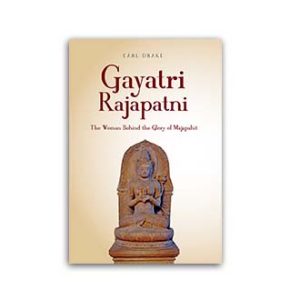This cookbook not only gives you the pleasure of cooking and eating authentic Nyonya cuisine, but also provide an insight into the diminishing culture of the Nyonyas and Babas. Even though there are many Nyonya cookbooks in the market, it remains extremely difficult to find traditional, authentic recipes as they usually focus on fusing cuisine without full understanding of Nyonya food culture. Here, the author uses her Nyonya family background and her own childhood memories as the backdrop to the unveiling of her most treasured culinary secrets.
No recipe can be perfect or accurate, chiefly because there are so many variables in cooking. The freshness of ingredients, the different brands of products, the qualities of the cooking wares used, the type of fire used (such as gas, electricity or charcoal) — all these factors play a part in determining the final flavour of the individual dish.
But most of all, it is the skill and creativity of the chef that brings out the best flavour in a dish. Should one be a good alchemist, one has the potential to be a good cook. The knowledge of the purpose and results of the ingredients used when combined, as well as the timing and intensity of the fire, is crucial. Such knowledge usually comes with the skill of practice.
The majority of Asian cooking focuses on our five senses rather than just the use of timing. For example, stir-frying is a matter of using one’s senses: relying on hearing, sight, smell, touch and taste, instead of the mere timing of the fire.
The importance of crunchiness in vegetables has been common knowledge in China for centuries without the present emphasis in Western- style cooking. The connoisseur would judge whether the ingredients were well-balanced and whether creative ways of making the sauces had been developed. Not only that, he or she would also judge the skillfulness of blending all the ingredients in the dish’s final presentation.
In cooking, there are a few important rules to consider, such as using the right ingredients in the right order in curries and kueh. For example, the pan has to be hot before the oil is added. When the pan becomes smoky, garlic is then added and the heat turned to medium, cooking until the garlic turns golden-brown and crispy. Curry paste is subsequently added into the pan, and the ingredients fried until the smell turns aromatic. The oil is then separated from the paste for about 5-10 minutes before you start adding the main ingredients such as meat, chicken and fish.
Bon appétit!
About the author: Malaysian-born Bee Lee Tan descends from a Nyonya family of exceptionally good cooks. Once banned from the kitchen for her curiosity as a child, Bee Lee is now an expert in Nyonya cooking. She lives in Perth, Australia. Bee Lee’s first cookbook, Penang Nyonya Cuisine: Hawker Delights met with much critical acclaim and has brought her recipes and culinary skills into the kitchens of both Western and Asian homes. Now, hot on the heels of that first book, Bee Lee’s second book has more than a hundred traditional and authentic Nyonya recipes — with meticulous attention to detail. Her frequent visits to Penang and Kedah, her birth place, to research family recipes (many of which are three or four generations old) has produced highly interesting results for beginning and experienced cooks Worldwide. This time, she goes further by articulating the culture, life and times of the Peranakan community and childhood memories of her own Nyonya childhood. In so doing, she has brought to life the background memories of some of these recipes, and helped to preserve her Nyonya culture. Bee Lee Tan has conducted master cooking classes at Beaconfield, Fremantle Australia as well as cooking classes in Perth’s T.A.F.E Technical Colleges and all over the world. She owned a Nyonya restaurant in Mindarie, Perth and has worked in the hospitality and food industry.
More than just another cookbook, the reader is also treated to glimpses inside the author’s childhood memories, and a succinct history on the culture and culinary practices of the Baba-Nyonya. (From our newsletter)








